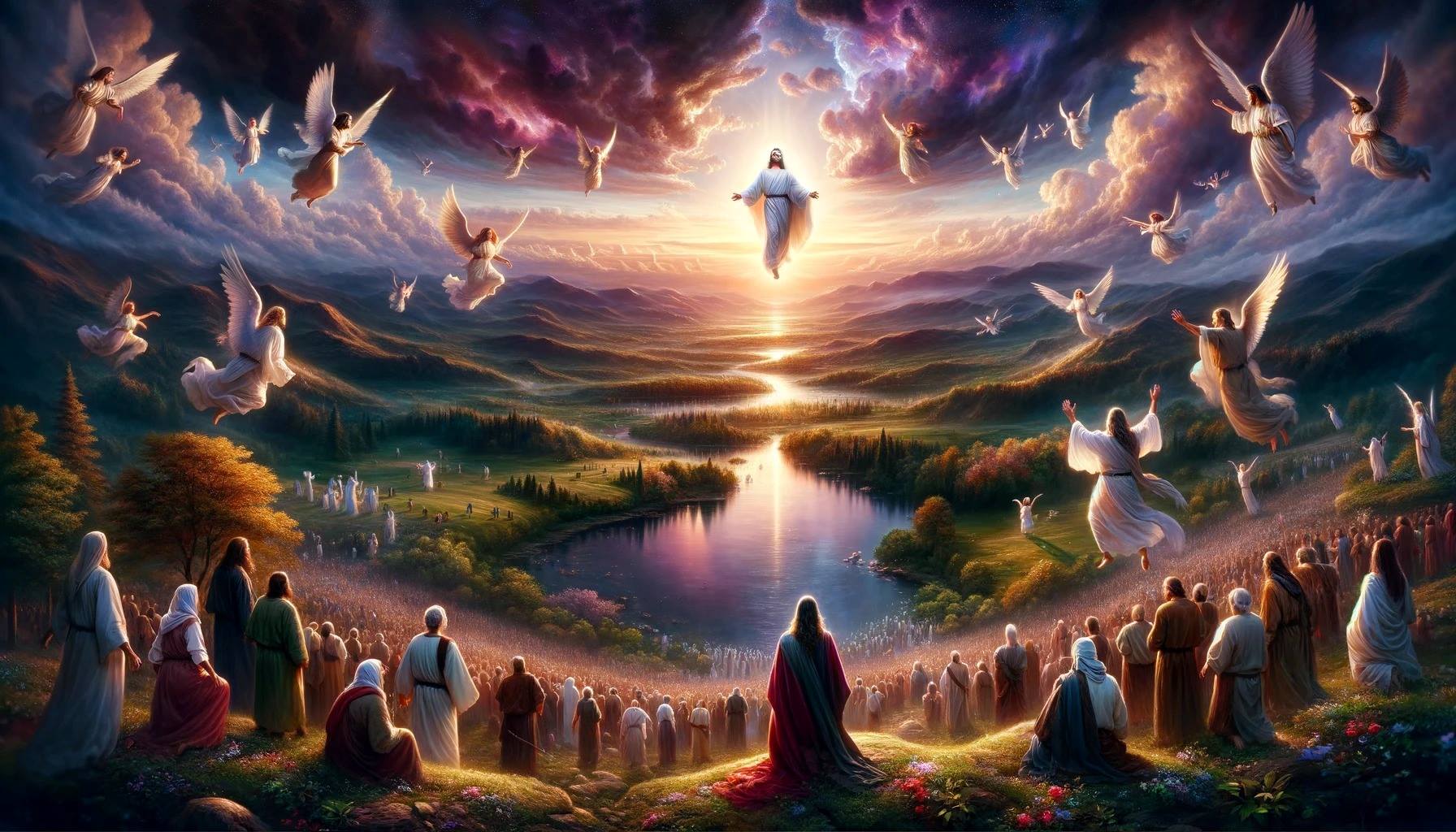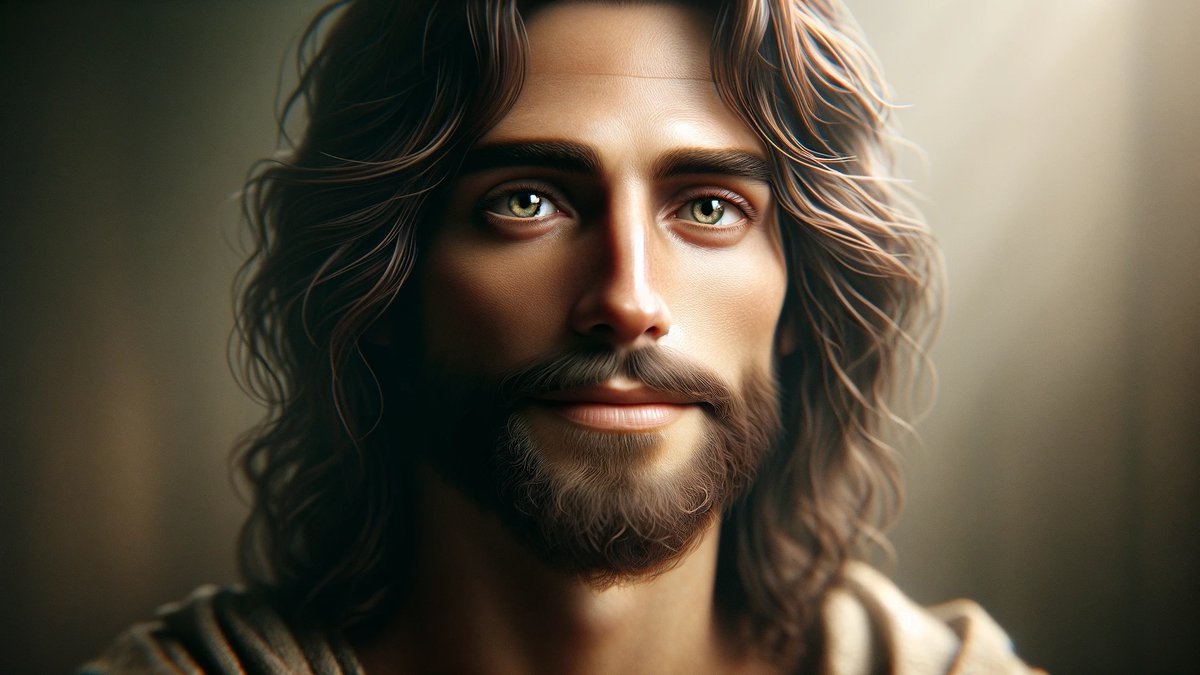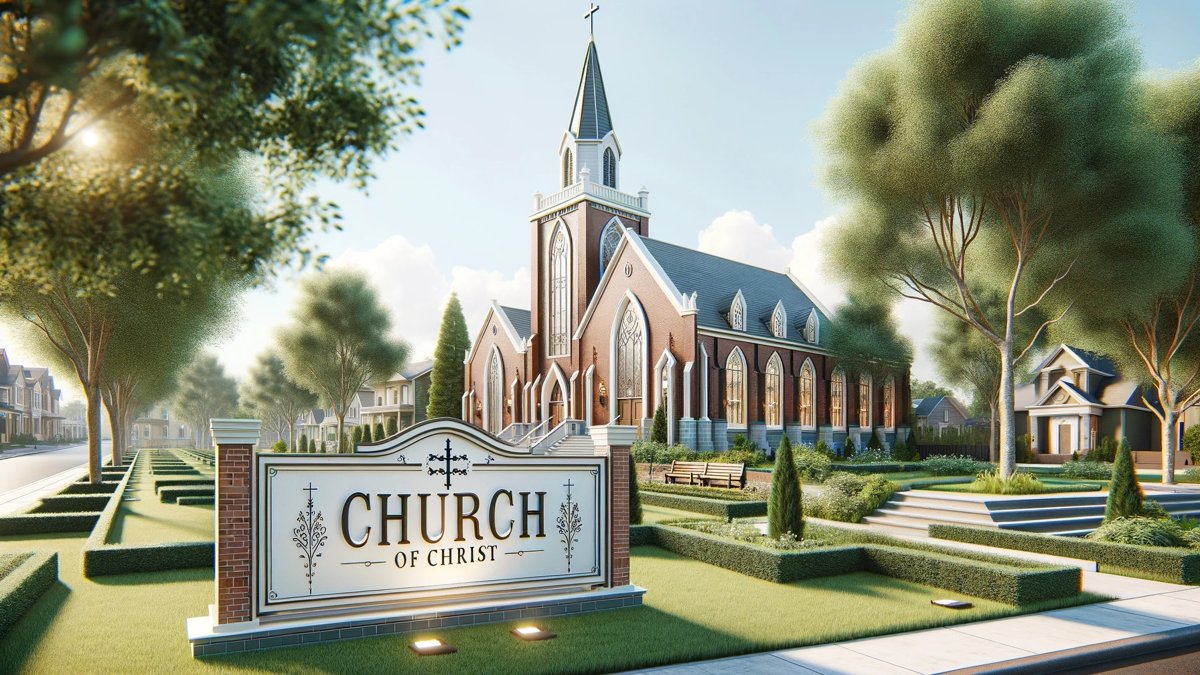Home>Christian Videos>Bible Stories>When Was The Church Of Jesus Christ Restored


Bible Stories
When Was The Church Of Jesus Christ Restored
Published: March 2, 2024
Ericka Andersen, an editor at Christian.net, expertly merges digital strategy with content creation, focusing on faith and societal issues. Her communication skills enhance the platform's engaging narratives, fostering meaningful dialogue on belief's impact on society.
Discover the restoration of the Church of Jesus Christ and its significance in the context of Bible stories. Learn about the historical events and teachings that define this pivotal moment in religious history.
(Many of the links in this article redirect to a specific reviewed product. Your purchase of these products through affiliate links helps to generate commission for Christian.net, at no extra cost. Learn more)
Table of Contents
Introduction
When was the Church of Jesus Christ restored? The restoration of the Church of Jesus Christ is a pivotal event in religious history. It marks the reestablishment of the original Christian church as established by Jesus Christ during His mortal ministry. The restoration of the Church of Jesus Christ is a significant event that has had a profound impact on the lives of millions of people around the world. In this article, we will explore the history and significance of the restoration of the Church of Jesus Christ and its impact on the world today.
Read more: When Was The Sistine Chapel Restored
The Need for Restoration
-
The Great Apostasy: After the death of Jesus Christ and His apostles, the original Church gradually drifted from its pure form. This period, known as the Great Apostasy, was characterized by the loss of priesthood authority, essential doctrines, and ordinances. The need for restoration arose due to the corruption and loss of truth within the Christian church.
-
Spiritual Darkness: During the Great Apostasy, the world was plunged into spiritual darkness. Without the guidance of living prophets and apostles, confusion and contention arose regarding essential religious truths. The absence of divine authority led to the proliferation of conflicting beliefs and practices, causing a spiritual void that needed to be filled.
-
Fulfillment of Prophecy: The need for restoration was also prophesied in the Bible. The book of Acts speaks of a time of restoration of all things, which God has spoken by the mouth of all His holy prophets since the world began. This prophecy indicated that a restoration of truth and authority was necessary to fulfill God's plan for His children.
-
Recovery of Lost Truths: The restoration was essential to recover the lost truths and ordinances necessary for salvation. These included the correct understanding of the nature of God, the purpose of life, the role of Jesus Christ as Savior and Redeemer, and the correct form of baptism and other essential ordinances.
-
Continuation of God's Work: The need for restoration was also driven by the desire of God to continue His work on the earth. The establishment of the Church of Jesus Christ was essential for the fulfillment of God's purposes and the preparation of the world for the Second Coming of Jesus Christ.
The need for restoration was a response to the spiritual darkness and the loss of truth and authority that characterized the Great Apostasy. It was a fulfillment of ancient prophecy and a vital step in the continuation of God's work on the earth.
The First Vision
-
The Sacred Experience: The First Vision refers to a pivotal event in the history of the restoration of the Church of Jesus Christ. In the spring of 1820, a young man named Joseph Smith sought divine guidance through prayer. In response to his sincere supplication, he experienced a remarkable vision in which he saw God the Father and His Son, Jesus Christ. This sacred experience marked the beginning of the restoration of the gospel and the reestablishment of the true Church of Jesus Christ on the earth.
-
Joseph Smith's Quest for Truth: Prior to the First Vision, Joseph Smith was troubled by the conflicting religious beliefs and the lack of clarity regarding which church to join. His sincere desire to find the truth led him to seek guidance through prayer and personal revelation. The First Vision was the culmination of his earnest quest for spiritual understanding and direction.
-
Divine Communication: During the First Vision, Joseph Smith received direct communication from God the Father and Jesus Christ. This divine manifestation clarified essential truths about the nature of God, the reality of the Savior, and the need for the restoration of the gospel. The communication during the First Vision laid the foundation for the subsequent events that led to the restoration of the Church of Jesus Christ.
-
Significance and Impact: The First Vision is significant because it marked the beginning of a new era in religious history. It demonstrated that God continues to communicate with His children and that He is mindful of their sincere inquiries. The impact of the First Vision is profound, as it led to the restoration of priesthood authority, the translation of ancient scripture, and the organization of the Church of Jesus Christ.
-
Continued Relevance: The First Vision continues to be a foundational event in the Church of Jesus Christ of Latter-day Saints. It is a testament to the reality of God the Father and His Son, Jesus Christ, and serves as a source of inspiration and guidance for millions of believers worldwide. The First Vision stands as a powerful testimony of the reality of divine communication and the ongoing work of God in the world.
The First Vision stands as a pivotal event in the history of the restoration of the Church of Jesus Christ. It represents a profound manifestation of divine communication and marks the beginning of a new dispensation of gospel truth and authority.
The Restoration of Priesthood Authority
-
Loss of Priesthood Authority: During the Great Apostasy, the authority to act in the name of God, known as priesthood authority, was lost. This loss meant that essential ordinances, such as baptism and the laying on of hands for the gift of the Holy Ghost, could not be performed with divine approval. Without this authority, the Church could not be organized or directed as Christ had originally established.
-
John the Baptist's Visit: The restoration of priesthood authority began with a visitation from John the Baptist to Joseph Smith and Oliver Cowdery. On May 15, 1829, John the Baptist, who held the Aaronic Priesthood during his mortal life, conferred this priesthood upon Joseph and Oliver. This event marked the restoration of the Aaronic Priesthood and the authority to baptize and prepare individuals for the coming of Christ.
-
Peter, James, and John: Following the restoration of the Aaronic Priesthood, the higher priesthood, known as the Melchizedek Priesthood, was restored. This occurred through a visitation from the ancient apostles Peter, James, and John. They conferred upon Joseph Smith and Oliver Cowdery the keys of the Melchizedek Priesthood, which includes the authority to lead and direct the Church, as well as to administer in the higher ordinances of the gospel.
-
Authority to Act in God's Name: The restoration of priesthood authority was essential for the reestablishment of the Church of Jesus Christ. Through the restoration of the priesthood, the authority to perform sacred ordinances, preach the gospel, and lead the Church was reinstated. This authority was not based on human appointment but was conferred by heavenly messengers who held the same authority during their mortal lives.
-
Continuation of Apostolic Ministry: The restoration of priesthood authority also ensured the continuation of the apostolic ministry as established by Jesus Christ. Through the bestowal of priesthood keys, the authority to direct the work of the Church and to receive revelation for its members was reestablished. This apostolic ministry continues in The Church of Jesus Christ of Latter-day Saints today, with a living prophet and twelve apostles who hold and exercise the keys of the priesthood.
The restoration of priesthood authority was a crucial aspect of the overall restoration of the Church of Jesus Christ. It provided the necessary authority to perform essential ordinances, preach the gospel, and lead the Church according to the pattern established by Jesus Christ during His mortal ministry.
The Organization of the Church
-
Establishment of Church Offices: Following the restoration of priesthood authority, the Church of Jesus Christ was formally organized. On April 6, 1830, in Fayette, New York, Joseph Smith and a small group of believers officially organized the Church. This marked the formal establishment of the Church of Jesus Christ in its restored state, with the ordination of Joseph Smith and Oliver Cowdery as the first and second elders of the Church, respectively.
-
Revelation on Church Organization: The organization of the Church was guided by revelation received by Joseph Smith. The principles of the organization, including the offices of elder, priest, teacher, and deacon, were revealed to Joseph Smith through divine communication. This ensured that the Church was organized according to the pattern established by Jesus Christ during His mortal ministry.
-
Restoration of Church Structure: The organization of the Church restored the structure and order that existed in the primitive Church. This included the calling of apostles, seventies, bishops, and other officers as outlined in the New Testament. The restoration of these offices was essential for the proper functioning and governance of the Church according to the will of Jesus Christ.
-
Laying the Foundation for Growth: The organization of the Church laid the foundation for its growth and expansion. The establishment of local congregations, the appointment of leaders, and the ordination of priesthood holders enabled the Church to fulfill its mission of proclaiming the gospel, perfecting the Saints, and redeeming the dead. This organizational structure provided the framework for the Church to fulfill its divine mandate.
-
Continuation of Apostolic Ministry: The organization of the Church ensured the continuation of the apostolic ministry as established by Jesus Christ. The calling of twelve apostles, with Peter, James, and John as the first presidency, mirrored the organization of the primitive Church. This apostolic ministry continues in The Church of Jesus Christ of Latter-day Saints today, with a living prophet and twelve apostles who hold and exercise the keys of the priesthood.
The organization of the Church of Jesus Christ was a pivotal step in the restoration of the original Christian church. It established the necessary structure and order for the governance and growth of the Church, ensuring that it functioned according to the pattern established by Jesus Christ during His mortal ministry.
Read more: When Is Jesus Christ Returning
The Growth and Spread of the Church
-
Missionary Work: Following its organization, the Church of Jesus Christ embarked on a mission to spread its message to all nations. The early members of the Church were filled with a zeal to share the restored gospel with others, leading to the rapid growth of the Church. Missionaries were called and sent to various parts of the United States and eventually to other countries, carrying the message of the restoration of the gospel and the need for all people to come unto Christ.
-
Persecution and Resilience: The growth of the Church was accompanied by significant persecution. The early members faced intense opposition, including physical violence, expulsion from their homes, and even martyrdom. Despite these challenges, the resilience of the early Saints and their unwavering commitment to their faith contributed to the continued growth of the Church. The persecution, rather than hindering the Church's progress, served to strengthen the resolve of its members and attract the attention of others who were curious about their faith.
-
Expansion Beyond Borders: The Church of Jesus Christ continued to expand beyond the borders of the United States. Missionary work in various countries led to the establishment of congregations and the conversion of individuals from diverse cultural and ethnic backgrounds. The message of the restored gospel resonated with people from different parts of the world, leading to the establishment of a global Church with members in numerous countries.
-
Translation of Scriptures: As the Church grew and spread, efforts were made to make the scriptures and other essential materials available in the languages of the people. The translation of the Book of Mormon and other standard works allowed individuals from different linguistic backgrounds to access and study the teachings of the Church in their native tongues. This facilitated the growth of the Church in non-English-speaking regions and contributed to the strengthening of the faith of its members worldwide.
-
Impact of Technology: In the modern era, the growth and spread of the Church have been further facilitated by advancements in technology. The use of the internet, social media, and digital communication platforms has enabled the Church to reach a broader audience and connect with individuals who may not have had previous exposure to its message. The Church's online presence has played a significant role in its continued growth and in providing resources for individuals to learn about its teachings and beliefs.
The growth and spread of the Church of Jesus Christ have been characterized by missionary efforts, resilience in the face of persecution, expansion beyond national borders, translation of scriptures, and the impact of technology. These factors have contributed to the global presence of the Church and its message of hope, redemption, and the restored gospel of Jesus Christ.
Conclusion
The restoration of the Church of Jesus Christ stands as a monumental event in religious history. It addressed the need for the recovery of lost truths, the reestablishment of priesthood authority, and the organization of the Church according to the pattern established by Jesus Christ during His mortal ministry. The growth and spread of the Church have led to its global presence, with members from diverse backgrounds and cultures. The impact of the restoration of the Church of Jesus Christ continues to be felt today, as millions of individuals find hope, purpose, and direction through its teachings. The restoration of the Church of Jesus Christ has brought about a renewed understanding of the nature of God, the mission of Jesus Christ, and the role of prophets and apostles in guiding God's children. It has provided a framework for individuals to come unto Christ, receive essential ordinances, and partake of the blessings of His Atonement. The significance of the restoration of the Church of Jesus Christ cannot be overstated, as it has brought about a renaissance of faith and a restoration of divine truth in a world in need of spiritual direction and enlightenment.














